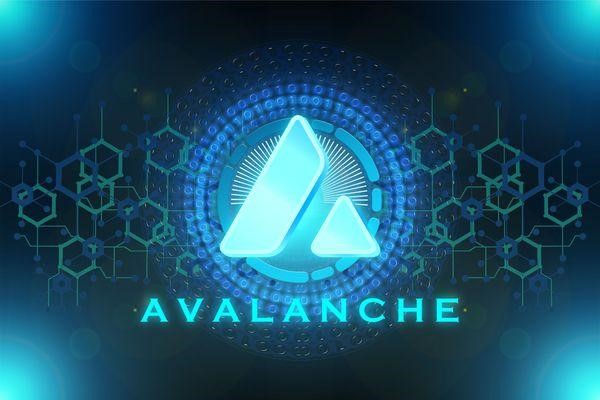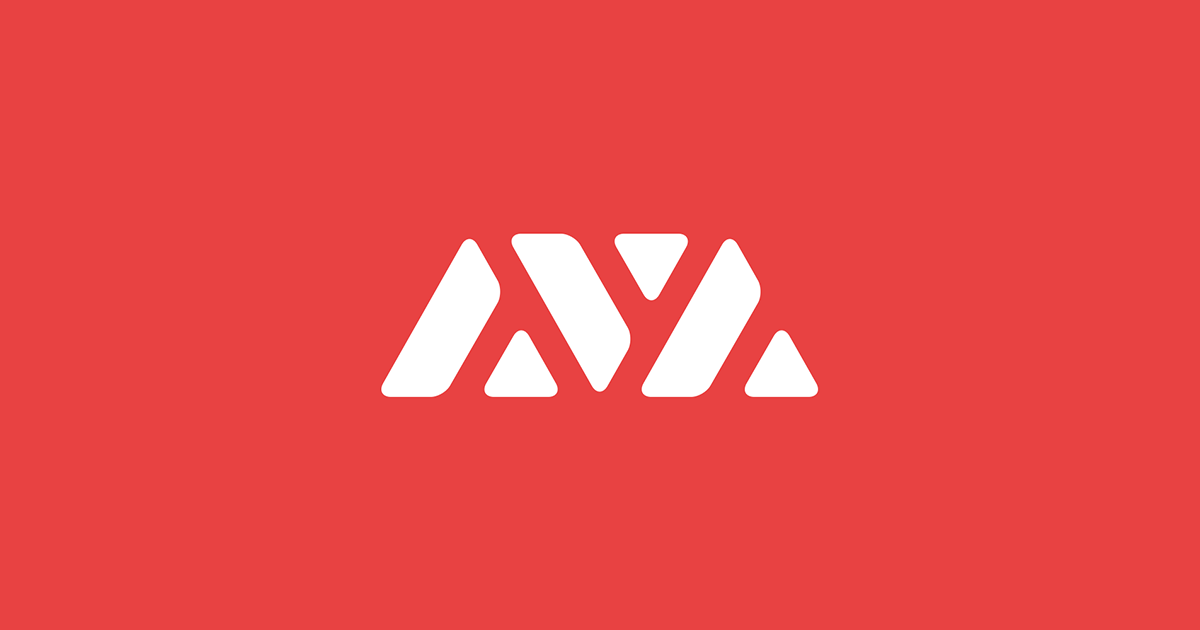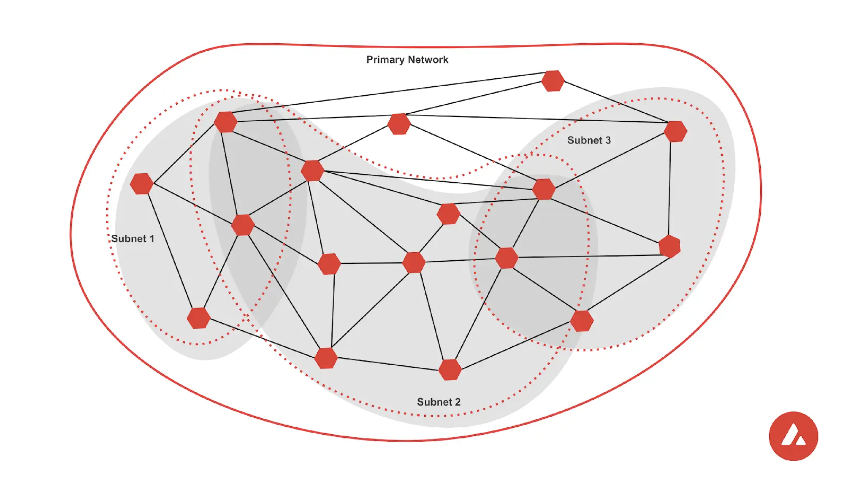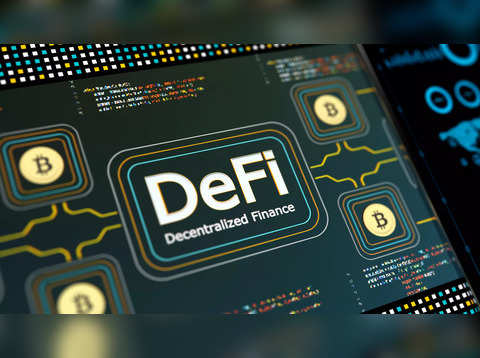AVAX: From High-Performance Cryptocurrency Beyond Blockchain to Digital Financial Revolution
Avalanche (AVAX): What is it?
Avalanche (AVAX) is a prominent player in the realm of cryptocurrencies, distinguished by its innovative features and capabilities. At its core, Avalanche is a blockchain project that has garnered attention for its unique approach to scalability, security, and speed. Unlike traditional blockchain networks, Avalanche employs a distinctive consensus mechanism and a Directed Acyclic Graph (DAG) structure, setting it apart in the competitive landscape of digital currencies.
This groundbreaking blockchain technology allows Avalanche to process transactions swiftly and efficiently, making it a promising contender for various applications, from decentralized finance (DeFi) to other decentralized applications (DApps). The AVAX token, native to the Avalanche network, plays a pivotal role in the ecosystem, finding applications within the platform and serving as a means of value exchange. As we delve into the intricacies of Avalanche, it becomes evident that its consensus mechanism, coupled with the DAG architecture, contributes significantly to its security and scalability advantages. The decentralized nature of the network ensures that transactions are validated in a robust and efficient manner, fostering a reliable and secure environment for users.
As we delve into the intricacies of Avalanche, it becomes evident that its consensus mechanism, coupled with the DAG architecture, contributes significantly to its security and scalability advantages. The decentralized nature of the network ensures that transactions are validated in a robust and efficient manner, fostering a reliable and secure environment for users.
In essence, Avalanche represents a forward-thinking approach to blockchain technology, addressing the challenges of scalability and speed that have often plagued traditional cryptocurrencies. As we explore the various facets of Avalanche, its unique features and promising potential make it a noteworthy player in the ever-evolving landscape of digital assets.

Avalanche Ecosystem and Projects
The Avalanche ecosystem stands as a dynamic and thriving hub for innovation within the cryptocurrency space, hosting a diverse array of projects that contribute to its robustness and versatility. One of the defining characteristics of the Avalanche platform is its commitment to fostering a collaborative and supportive environment for developers and entrepreneurs.
Within the Avalanche ecosystem, a myriad of projects has emerged, each catering to different aspects of decentralized applications (DApps), decentralized finance (DeFi), and other blockchain-based solutions. These projects leverage the unique features of Avalanche, such as its high-performance consensus mechanism and Directed Acyclic Graph (DAG) structure, to create efficient and scalable applications.
One noteworthy aspect of the ecosystem is the AVAX token, the native cryptocurrency of the Avalanche network. The AVAX token serves as the lifeblood of the ecosystem, facilitating transactions, powering smart contracts, and incentivizing participants through mechanisms like staking and mining. As we explore the projects hosted within the Avalanche ecosystem, it becomes apparent that innovation is not limited to a specific niche. From decentralized exchanges and lending platforms to gaming and non-fungible token (NFT) marketplaces, the diversity of projects reflects the versatility of Avalanche as a blockchain platform.
As we explore the projects hosted within the Avalanche ecosystem, it becomes apparent that innovation is not limited to a specific niche. From decentralized exchanges and lending platforms to gaming and non-fungible token (NFT) marketplaces, the diversity of projects reflects the versatility of Avalanche as a blockchain platform.
In summary, the Avalanche ecosystem is a vibrant and dynamic space, hosting a rich tapestry of projects that contribute to the platform's overall growth and success. The collaborative spirit within this ecosystem continues to drive advancements in blockchain technology and plays a crucial role in shaping the future of decentralized applications.
Avalanche Consensus Mechanism: DAG (Directed Acyclic Graph)
The Avalanche consensus mechanism, coupled with its innovative use of Directed Acyclic Graph (DAG) technology, stands as a testament to the platform's commitment to overcoming the limitations of traditional blockchain architectures. Unlike conventional consensus mechanisms like Proof-of-Work (PoW) or Proof-of-Stake (PoS), Avalanche introduces a unique and highly efficient approach to achieving consensus.
At the heart of Avalanche's consensus mechanism is the concept of a DAG, a structure that organizes transactions in a non-linear fashion, diverging from the linear block structure seen in traditional blockchains. This divergence allows for a more flexible and scalable system, where multiple transactions can be processed simultaneously, contributing to improved transaction throughput. Avalanche's consensus mechanism operates on the principle of participants reaching a rapid and decentralized agreement on the state of the network. This is achieved through a process called Avalanche consensus, where nodes in the network independently query each other about the validity of transactions. Nodes then make decisions based on the responses they receive, ultimately leading to the network converging on a consensus.
Avalanche's consensus mechanism operates on the principle of participants reaching a rapid and decentralized agreement on the state of the network. This is achieved through a process called Avalanche consensus, where nodes in the network independently query each other about the validity of transactions. Nodes then make decisions based on the responses they receive, ultimately leading to the network converging on a consensus.
The use of DAG technology in Avalanche enhances the system's scalability, as it enables a high degree of parallel processing. This scalability is a crucial factor in addressing one of the primary challenges faced by many blockchain networks—scalability without compromising security. Moreover, the decentralized nature of the consensus mechanism ensures that the network remains resilient and secure against potential attacks.
In essence, Avalanche's innovative use of the DAG structure in its consensus mechanism not only sets it apart from other blockchain platforms but also positions it as a pioneer in addressing the scalability trilemma—offering a harmonious balance between decentralization, security, and scalability.

AVAX Mining and Staking
Avalanche (AVAX) mining and staking constitute essential components of the network's ecosystem, providing avenues for participants to actively contribute to the security, functionality, and decentralization of the platform.
Mining on the Avalanche network involves the process of validating transactions and adding them to the blockchain, contributing to the overall integrity of the network. Unlike traditional Proof-of-Work (PoW) systems, Avalanche utilizes a unique consensus mechanism that doesn't rely on resource-intensive computations. Instead, participants are incentivized to mine by staking a certain amount of AVAX tokens.
Staking, on the other hand, allows users to actively participate in the network's operations and decision-making processes by locking up a certain amount of AVAX in a designated wallet. This process not only contributes to the security of the network but also helps in achieving consensus through the Avalanche protocol. Stakers are rewarded with additional AVAX tokens for their contribution, creating a system where participants are financially motivated to support the stability and efficiency of the platform. The combination of mining and staking in the Avalanche ecosystem creates a symbiotic relationship between users and the network. Participants who engage in mining and staking activities play a pivotal role in securing the network, validating transactions, and contributing to the overall decentralization of the platform. This decentralized model ensures that no single entity or group has undue control over the consensus process, promoting a robust and resilient blockchain network.
The combination of mining and staking in the Avalanche ecosystem creates a symbiotic relationship between users and the network. Participants who engage in mining and staking activities play a pivotal role in securing the network, validating transactions, and contributing to the overall decentralization of the platform. This decentralized model ensures that no single entity or group has undue control over the consensus process, promoting a robust and resilient blockchain network.
In summary, AVAX mining and staking serve as integral mechanisms in the Avalanche ecosystem, empowering users to actively participate in the network's operations while being incentivized through the reward structures embedded within the platform. This collaborative approach fosters a community-driven network that prioritizes security, decentralization, and the collective advancement of the Avalanche blockchain.
Avalanche and DeFi (Decentralized Finance)
Avalanche (AVAX) has emerged as a prominent player in the realm of Decentralized Finance (DeFi), leveraging its advanced blockchain architecture to offer a robust and efficient platform for decentralized financial applications.
One of the key contributions of Avalanche to the DeFi space lies in its high-performance consensus mechanism and Directed Acyclic Graph (DAG) structure. This allows the network to process transactions rapidly and at a low cost, making it an ideal environment for a wide array of DeFi applications. Whether it be decentralized exchanges (DEX), lending and borrowing protocols, or yield farming platforms, Avalanche provides a scalable infrastructure that can accommodate the growing demands of the DeFi ecosystem. The AVAX token plays a pivotal role in facilitating various DeFi activities on the Avalanche network. It serves as a medium of exchange within decentralized applications, enables users to participate in liquidity pools, and acts as collateral for borrowing and lending activities. The seamless integration of AVAX into the DeFi landscape contributes to the overall liquidity and usability of the Avalanche ecosystem.
The AVAX token plays a pivotal role in facilitating various DeFi activities on the Avalanche network. It serves as a medium of exchange within decentralized applications, enables users to participate in liquidity pools, and acts as collateral for borrowing and lending activities. The seamless integration of AVAX into the DeFi landscape contributes to the overall liquidity and usability of the Avalanche ecosystem.
Furthermore, Avalanche's commitment to interoperability allows DeFi projects built on its platform to interact with other blockchain networks, fostering a more interconnected and collaborative decentralized financial landscape. This interoperability opens up opportunities for users to access a diverse range of financial instruments and services across different blockchain ecosystems.
In essence, Avalanche's synergy with DeFi represents a paradigm shift in the traditional financial landscape, offering users decentralized alternatives to traditional banking and financial services. The platform's speed, scalability, and commitment to fostering innovation position it as a key player in shaping the future of decentralized finance. As the DeFi space continues to evolve, Avalanche stands at the forefront, providing a solid foundation for the development and expansion of decentralized financial applications.

Avalanche Future and Developments
The future of Avalanche (AVAX) holds promising prospects as the platform continues to evolve, adapt, and contribute to the rapidly changing landscape of blockchain technology. With a commitment to innovation and scalability, Avalanche is poised to play a pivotal role in shaping the future of decentralized applications and financial ecosystems.
A significant aspect of Avalanche's future lies in its ongoing development plans and strategic initiatives. The project is focused on enhancing its capabilities, expanding its ecosystem, and addressing emerging challenges in the blockchain space. One notable area of development is the continuous improvement of the platform's consensus mechanism and DAG structure to ensure optimal performance, security, and scalability.
As blockchain technology becomes more mainstream, Avalanche aims to position itself as a go-to platform for developers and businesses seeking a reliable and efficient blockchain solution. The platform's versatility and support for a wide range of use cases, from decentralized finance (DeFi) to gaming and beyond, make it well-suited for the diverse needs of the evolving digital landscape. Moreover, Avalanche's commitment to interoperability is expected to be a key driver of its future success. The ability to seamlessly connect with other blockchain networks and assets enhances the platform's utility and provides users with a more integrated and interconnected experience. This interoperability opens doors for collaboration with other blockchain projects and enables the development of cross-chain applications.
Moreover, Avalanche's commitment to interoperability is expected to be a key driver of its future success. The ability to seamlessly connect with other blockchain networks and assets enhances the platform's utility and provides users with a more integrated and interconnected experience. This interoperability opens doors for collaboration with other blockchain projects and enables the development of cross-chain applications.
Looking ahead, the growth of the Avalanche ecosystem is likely to be fueled by the emergence of new projects and decentralized applications. The platform's support for developers, its vibrant community, and its emphasis on user-friendly experiences contribute to an environment conducive to innovation.
In conclusion, the future of Avalanche appears bright, with ongoing developments, strategic partnerships, and a commitment to advancing blockchain technology. As the platform continues to mature and adapt to the evolving needs of the industry, Avalanche is well-positioned to be a driving force in the decentralized future of digital finance and applications.
My Other Articles:
- The Revolution of NFTs in the Art World: The Rise of Crypto Art
- Cryptocurrencies: A Revolutionary Financial Trend
- The World of Crypto Airdrops: Strategies, Advantages, and Future Outlook
- Bitcoin ETF Approval: Shaping the Future of Cryptocurrency Markets
- Real World Assets: Blockchain's Gateway to Tangible Value







![[LIVE] Engage2Earn: Save our PBS from Trump](https://cdn.bulbapp.io/frontend/images/c23a1a05-c831-4c66-a1d1-96b700ef0450/1)







![[ℕ𝕖𝕧𝕖𝕣] 𝕊𝕖𝕝𝕝 𝕐𝕠𝕦𝕣 𝔹𝕚𝕥𝕔𝕠𝕚𝕟 - And Now What.... Pray To The God Of Hopium?](https://cdn.bulbapp.io/frontend/images/79e7827b-c644-4853-b048-a9601a8a8da7/1)



























